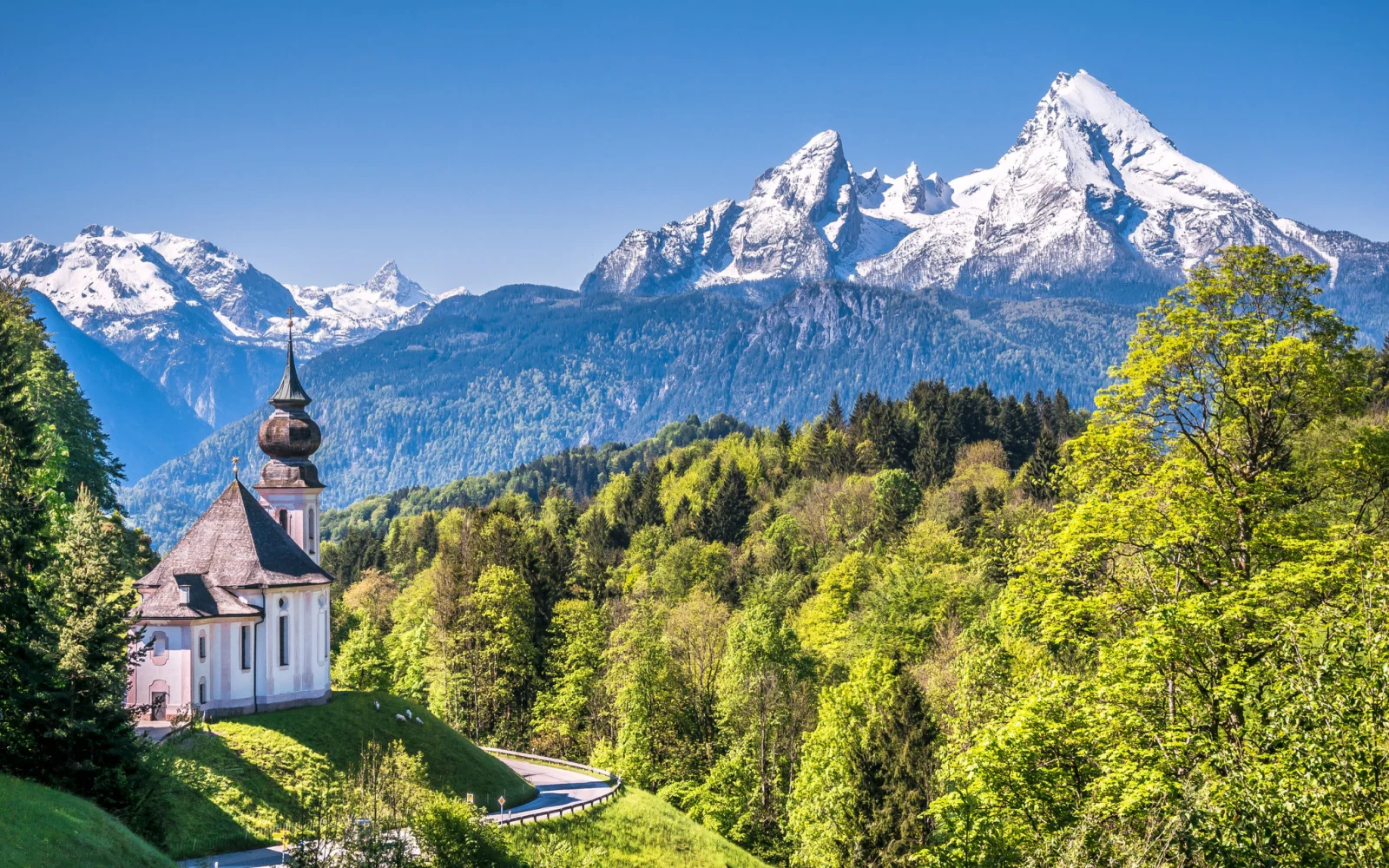Germany’s seven most stunning mountains, including the highest peak Zugspitze and the mystical Brocken, offer breathtaking scenic views and a range of activities like hiking and skiing. These mountains, accessible by trails and cable cars, are spread across various ranges including the Bavarian Alps and Harz Mountains.
The 7 Best Mountains in Germany
Some of the best mountains in Germany are famous for their jaw-dropping elevation (like Zugspitze), while others are known for the spooky legends and ruins that surround their mist-shrouded peaks.
Germany’s most incredible mountains are scattered around the country, lying within 6 different ranges that rise up in the Central Uplands and Bavarian Alps regions of the country.
From the iconic Zugspitze in the Wetterstein Mountains to occultic mysteries of Wurmberg in the Harz Mountains, you’ll want to check out every one of the 7 best mountains in Germany.
All of Germany’s mountains offer something unique to casual cable car riders, hikers, skiers, and paragliders, but these 7 mountains are the country’s best:
- Zugspitze, Wetterstein Mountains
- Nebelhorn, Allgäu Alps
- Mount Tegelberg, Ammergau Alps
- Wank, Ester Mountains
- Great Arber, Bavarian Forest Mountains
- Brocken, Harz Mountains
- Wurmberg, Harz Mountains
Take a look at the details for each of the best mountains in Germany to see which peaks you plan to summit – via a grueling hike or a pleasant cable car ride – next!
1. Zugspitze, Wetterstein Mountains
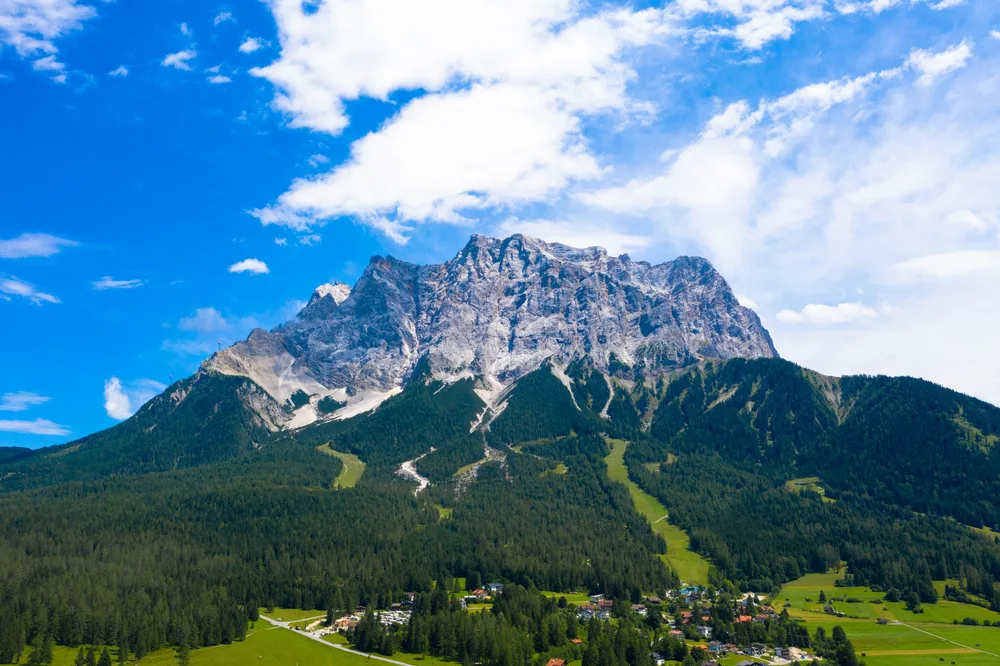
U. Eisenlohr/Shutterstock
- Peak elevation: 9,717 ft/2,962 m
- Range: Wetterstein Mountains, Germany
- Famous for: Highest mountain in Germany
As the highest mountain in all of Germany, Zugspitze tops the list of the best mountains in Germany and offers incredibly scenic views from its soaring summit.
From the top of Zugspitze (part of the Wetterstein Mountains), you can see panoramic views of Germany, Austria, Switzerland, and Italy and 400 mountain peaks.
With close proximity to Munich (56 miles) and the Garmisch-Partenkirchen alpine ski resort (4 miles), Zugspitze is very popular with tourists because the peak is accessible via trails and cable car lifts.
Hiking, mountaineering, and climbing are top-notch on Zugspitze, which is known for its strenuous trails and paths that wind up to the peak at just under 10,000 feet elevation.
To hike to the summit, take one of the 6 routes: Höllental, Gatterl, Reintal, Stopselzieher, Jubiläumsgrat, or Kletterroute Eisenzeit. The Höllental is the most popular and winds through the gorgeous, waterfall-studded Hell’s Valley.
2. Nebelhorn, Allgäu Alps
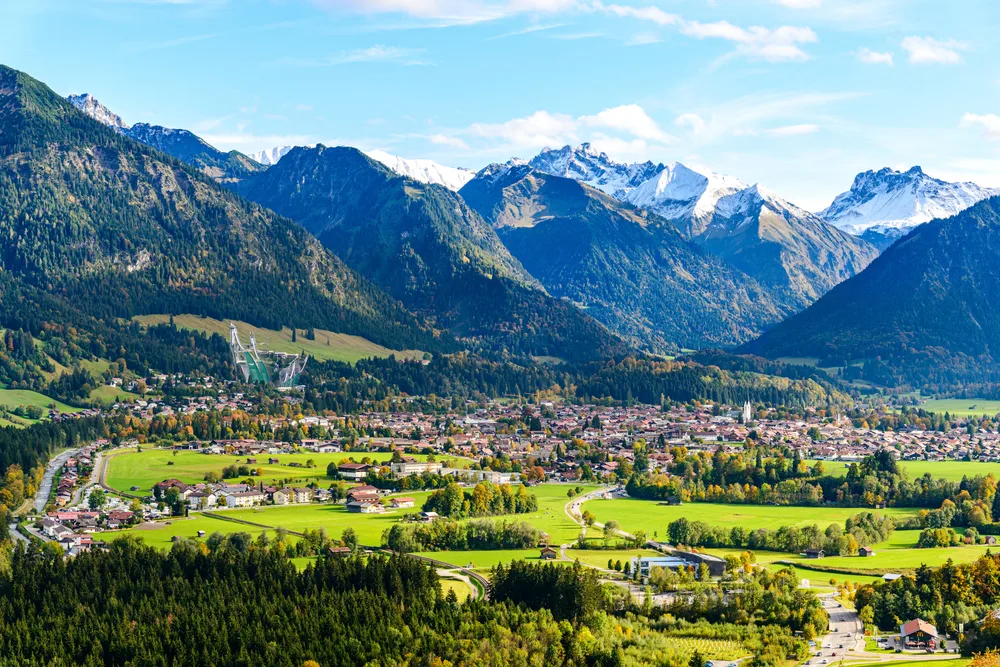
Mikalai Nick Zastsenski/Shutterstock
- Peak elevation: 7,297 ft/2,224 m
- Range: Allgäu Alps, Germany
- Famous for: Competitions, famed views from the summit
The Nebelhorn is a stunning mountain in Germany’s Allgäu Alps, standing over 7,000 feet tall and offering spectacular views of 400 nearby mountains like Zugspitze, Schesaplana, and the Lechtaler Alps.
This mountain is the site of several competitions, including the Nebelhorn Trophy figure-skating competition, Nebelhorn Classics freeride races, and the Nine Knights freeski contest.
Nebelhorn is one of the best mountains in Germany because it offers such stunning views and is easily accessible via hiking trails and cable cars.
The hiking trails to the summit can be difficult – you’ll need special equipment to reach it via Hindelang Klettersteig ferrata wired with cables and fixed anchors.
An easier option, for most visitors, is the excellent cable car line on Nebelhorn. There are 4 stations where you can hop on or off, making it simple to customize your trip up the mountain by hiking partway and using the lift for the rest.
Cafes, a ski lodge, expansive viewing deck, playground, and chances to see brave paragliders jumping off and skiers making their way down the mountain await you at the summit.
3. Mount Tegelberg, Ammergau Alps
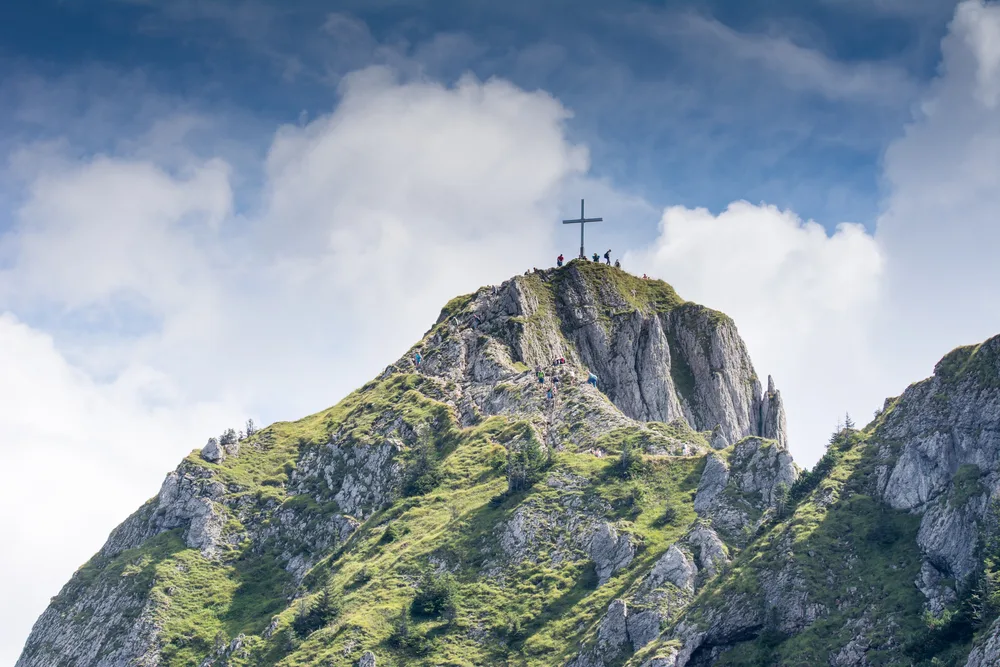
Tourists hiking on mount Tegelberg on August 23, 2015 in Schwangau, Germany/manfredxy/Shutterstock
- Peak elevation: 6,171 ft/1,881 m
- Range: Ammergau Alps, Germany
- Famous for: Views of Neuschwanstein Castle and Ammer Mountains
In the Ammergau Alps in Bavaria, Germany, you’ll find Mount Tegelberg – an impressive mountain with enchanting views of nearby Neuschwanstein Castle rising up out of the dense pines surrounding it.
This popular mountain is known for these stunning views and its perfect conditions for hang gliding and paragliding. It’s been used for these sports for decades, even hosting the 1983 FAI Hang Gliding World Championship!
Hike to the summit if you choose – just note that the trails can be challenging. Many people prefer taking the Tegelberg cable car system to the top, a scenic 10-minute ride.
At the summit, you may be able to see people leaping off in hang gliders and paragliding their way down the mountain. Wander down the Bleckenau path (suitable for all ages) for even better views at the top!
A charming mountain restaurant and lodge (Tegelberghaus) is at the summit where you can recoup after a grueling hike or just enjoy some tasty bites or an overnight stay in a beautiful, scenic setting.
4. Wank, Ester Mountains
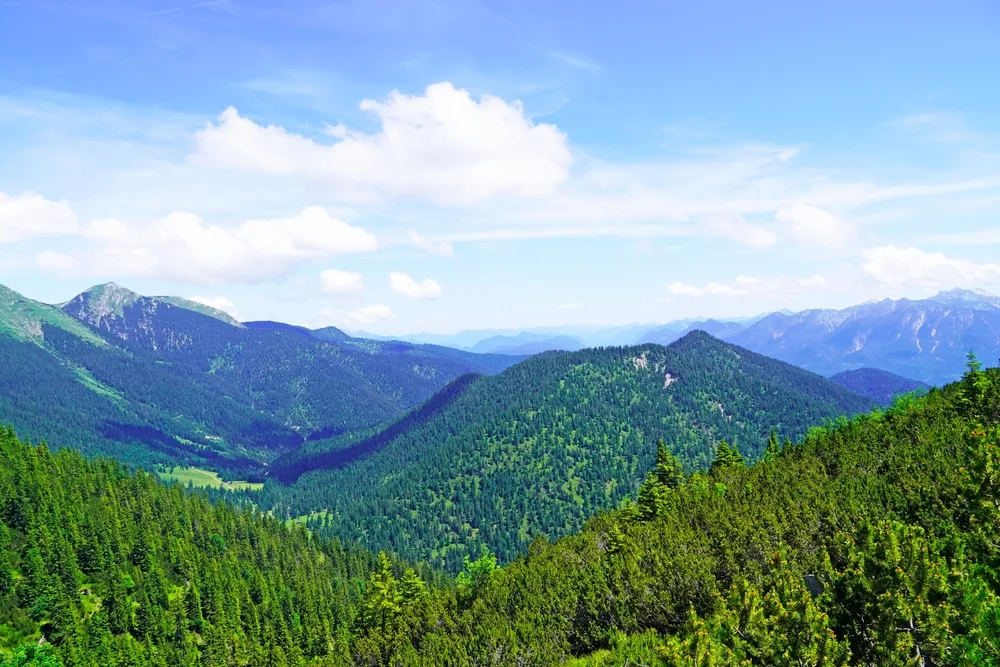
Elly Miller/Shutterstock
- Peak elevation: 5,840 ft/1,780 m
- Range: Ester Mountains, Germany
- Famous for: Observatory, views of Zugspitze and Wetterstein Mountains
The recognizable cross-topped summit of Wank mountain is nestled in the Ester Mountain range and easily qualifies as one of the best mountains in Germany.
Blanketed in dense stands of spruce and pine trees of the Wank forest, this majestic mountain offers panoramic views of the Wetterstein Mountains and the nearby Garmisch-Partenkirchen alpine ski resort.
Hikers and paragliders arrive on the mountain in droves during the summer months, taking advantage of its scenic views from the top and picturesque descent. The ski slopes on the mountain were closed years ago.
Reaching the top, where the trees thin out and only grass covers the rock, is possible via the Wankbahn cable car system (summer months) or via hiking trails and footpaths.
When you reach the summit, you’ll be greeted by a large cross from 1904, humble mountain lodge and restaurant known as the Wank-Haus and a summit observatory that monitors climate and air quality.
5. Great Arber, Bavarian Forest Mountains
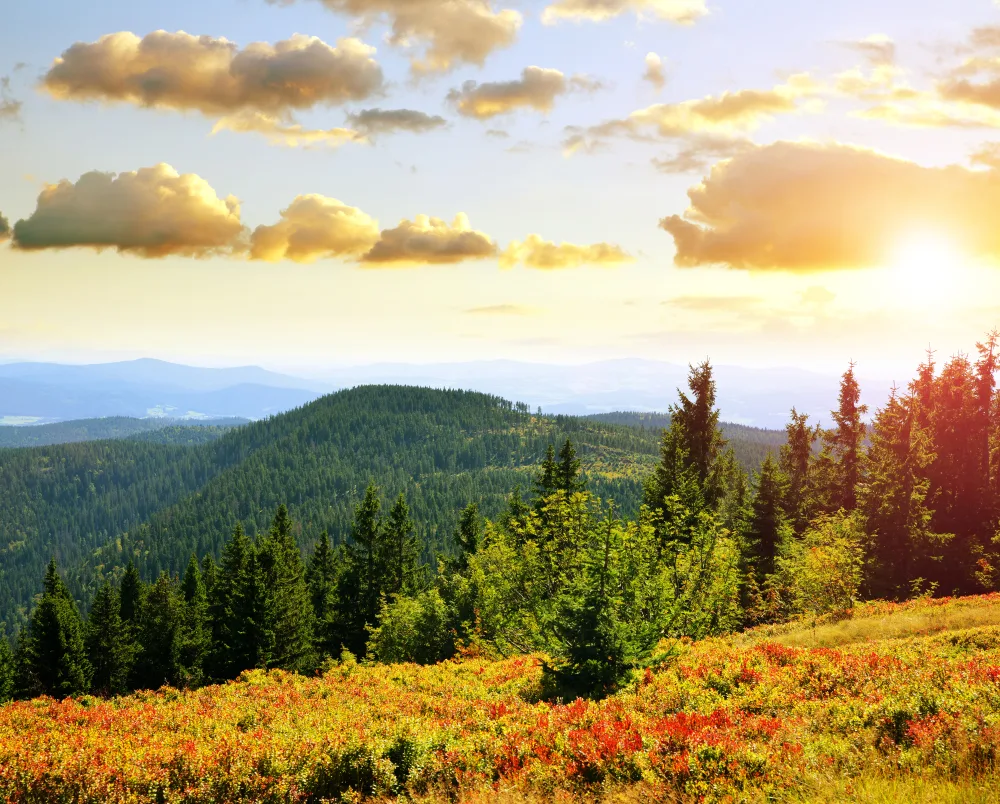
Vaclav Volrab/Shutterstock
- Peak elevation: 4,775 ft/1,455 m
- Range: Bavarian Forest Mountains, Germany
- Famous for: Skiing, tallest mountain in Bavarian Forest
For breathtaking views of the Bavarian/Bohemian Forest Mountains, you’ll want to summit Great Arber (Großer Arber), also known locally as the Snow King of the Bavarian Forest.
This mountain is the highest peak amid the Bavarian Forest Mountains, rising nearly 5,000 feet high and offering vista views of the sparkling Großer and Kleiner Arbersee alpine lakes and surrounding mountains.
It’s in one of the most famous skiing regions of Germany, offering family-friend ski slopes for all skill levels and the most modernized ski area in the Bavarian Forest Mountains.
Great Arber has 4 peaks. The main summit is topped with a massive cross placed in 1913. The Kleiner, Großer Seeriegel, and Bodenmaiser Riegel with its uncanny rock formation’s resemblance to German composer Richard Wagner Kopf.
To reach these treeless peaks, you can hike your way up the mountain via a footpath from the parking lot or, for a much simpler summit, ride the Arber Bergbahn railway all the way to the top.
6. Brocken, Harz Mountains
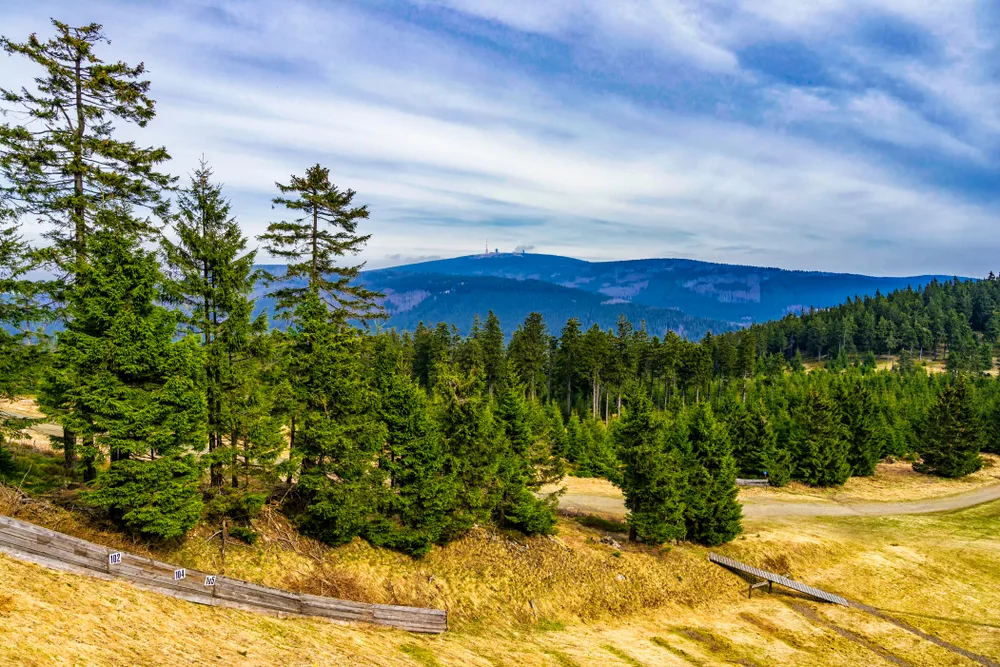
Marcus_Hofmann/Shutterstock
- Peak elevation: 3,747 ft/1,142 m
- Range: Harz Mountains, Germany
- Famous for: Highest mountain in the Harz range, spooky legends
The Brocken, sitting in the Harz Mountains within the Harz National Park, has the distinction of being the highest mountain in the range and in Northern Germany.
Covered in snow for much of the year, this is a misty, foggy mountain with charming views of nearby villages and sweeping panoramas of the surrounding mountains.
Legends and history make this mountain famous. Once a site for spy and surveillance equipment during the Cold War and the legend of black magic and occultic rituals on the mountain.
Johann Wolfgang von Goethe famously wrote about the spooky, witchcraft-driven legends of Brocken in his play, Faust, and a hiking path (Goethe Way) commemorates his fascination with this peak.
Take the Harz Narrow Gauge Railway to the summit, or go the adventurous route and hike or bike up the mountain for a challenge. You can even take a horse-drawn carriage to the top from Schierke!
7. Wurmberg, Harz Mountains
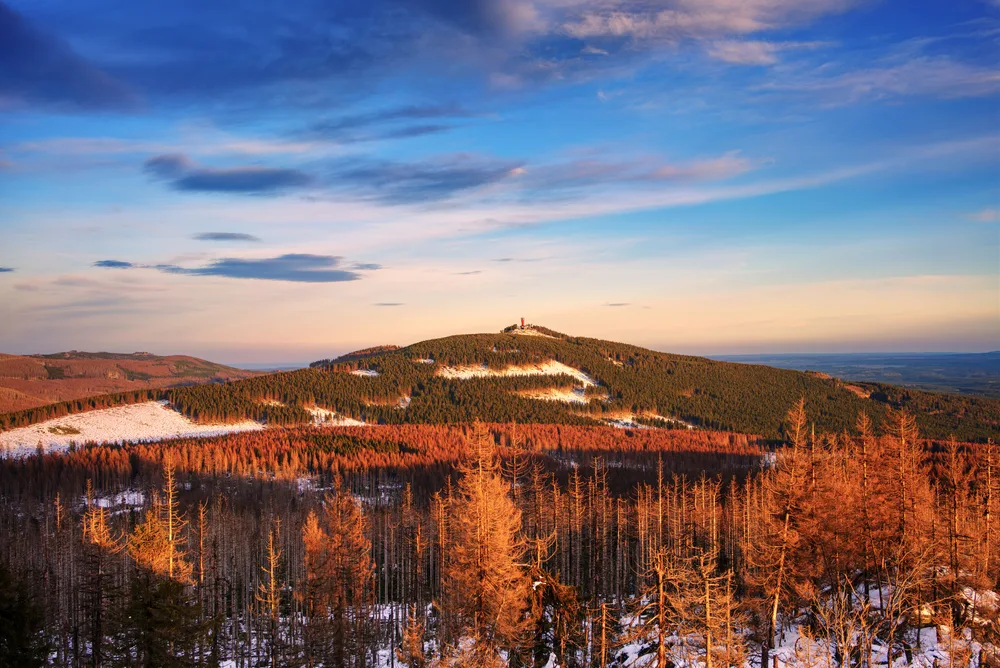
K I Photography/Shutterstock
- Peak elevation: 3,186 ft/971 m
- Range: Harz Mountains, Germany
- Famous for: Highest mountain in Lower Saxony, ancient ruins
South of the Brocken is another amazing mountain in Germany: Wurmberg, also in the Harz Mountains and within the Harz National Park.
This mountain isn’t as tall as Brocken at just over 3,100 feet, but it’s just as shrouded in myth and mystery.
Ruins at the peak and a stone staircase (Heath Staircase, once called Witch’s Staircase) leading to the summit have been discovered here, theorized as ancient Celtic worship sites.
At the summit, a stone terrace reaches to the edge where a pagan temple is rumored to have been placed in ancient times. The presence of the stone staircase and ruins here make it a must-see site.
A restaurant midway up the mountain near the Wurmberg Gondola Lift (which you can take all the way to the top) is perfect to grab a bite to eat in scenic surroundings.
Six downhill ski runs, a 4,900-foot toboggan run, ski jumps, hiking trails, and mountain bike trails are all popular activities on the mountain if you’re not satisfied with a lift ride!
Things to Consider
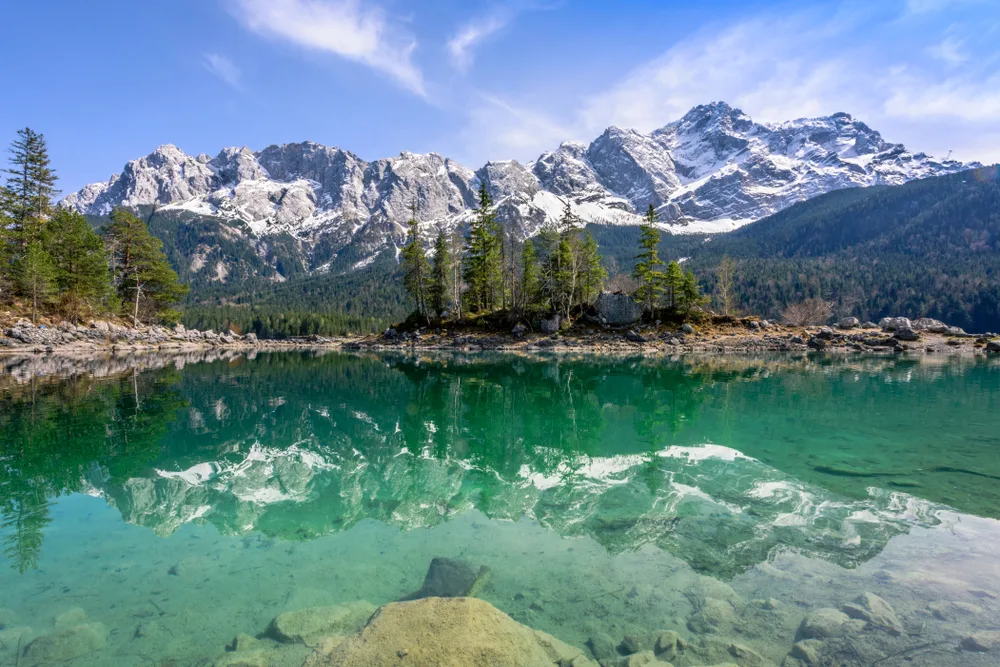
CA Irene Lorenz/Shutterstock
Heading to Germany’s most incredible and iconic mountains means doing a little research and getting a good idea of what to expect. Here are some things to consider before you go!
- Mind the altitude. The best mountains in Germany vary widely in their peak elevation, from 3,186 feet all the way to 9,717 feet. This means the elevation and altitude you’ll be dealing with is a matter of which mountain you visit, so be sure to keep track of your breathing and oxygen needs and take frequent rests if you’re feeling sapped of energy on the way up.
- Check conditions before you go. If you plan on riding a cable car, mountaineering, hiking, skiing, toboggan runs, or paragliding, do your research on your chosen mountain before you plan your trip. Certain runs, slopes, and paths are closed at different times of the year or due to unexpected severe weather.
- Consider your crew. Who are you bringing with you to the best mountains in Germany? If you’re traveling with reasonably fit people that aren’t very young or elderly, you’ll probably be fine choosing almost any hiking trail. If you’re bringing kids or older folks along, you’ll want to make sure you can use the lift to the summit and check with a doctor to ensure it’s safe for your crew to be at such high altitudes.
Frequently Asked Questions
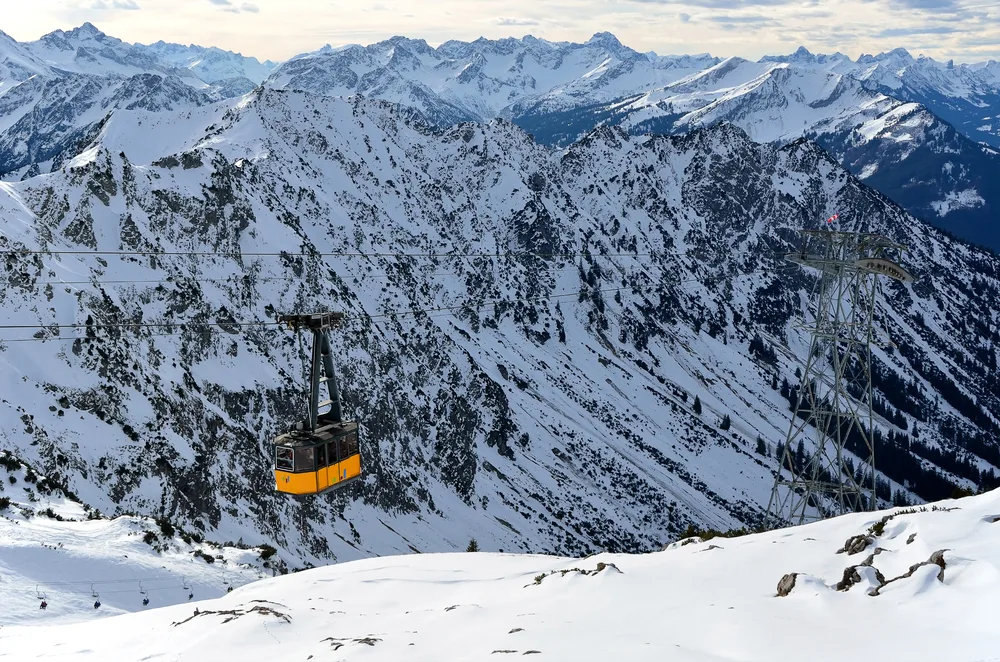
Anettas/Shutterstock
If you have lingering questions or concerns about Germany’s best mountains, take a look at these FAQs to clear the air and learn more on the topic.
Where is the prettiest place in Germany?
The prettiest places in Germany include the fairytale-esque Rakotz Bridge in Gablenz, Saxony, the clear alpine Lake Konigssee in Berchtesgadener Land, and the Middle Rhine Valley with picturesque castles and terraced vineyards on the banks of the Rhine River.
The cities of Dresden, Hamburg, Munich, and Regensburg are also named among the prettiest places to visit in Germany.
What are the top mountains in Germany?
Zugspitze, at 9,717 ft or 2,962 m tall, is the top mountain in Germany and one of the best to see in person. Nebelhorn amid the Allgäu Alps ranks as the #2 mountain in Germany and stands 7,297 ft or 2,224 m tall.
The #3 top mountain in Germany is Mount Tegelberg in the Ammergau Alps range. It stands 6,171 ft or 1,881 m tall and offers great views of Neuschwanstein Castle.
What is Germany's most famous mountain range?
Germany’s most famous mountain range is the German Alps, followed by the Black Forest Mountains and Wetterstein Mountains.
These ranges are made famous due to their incredibly high peaks, folklore and fairytales, and massive spread over the country.
Which German cities have mountains?
Germany is full of cities set in the various mountain ranges here, but some of the best mountainous cities are Garmisch-Partenkirchen in the Bavarian Alps and Füssen set near Mount Tegelberg.
Garmisch-Partenkirchen is an alpine ski resort town that is very popular with German and international tourists, while Füssen is an 11th-century village with fairytale charm.
So, Will You Visit the Best Mountains in Germany?
If you can see yourself reaching the summit of one of the best mountains in Germany, you’ve got a list of the 7 peaks worth considering!
From the famous Zugspitze in the Wetterstein Mountains to the humble-yet-creepy Wurmberg in the Harz Mountains, each one of Germany’s iconic peaks has a magnetic draw for adventurers and admirers of a darn good view.
Mind the time of year you go – the best time to visit Germany (late summer) may or may not be the perfect time to go to the mountains, depending on whether or not you’re hoping to ski.
With the promise of panoramic, alpine views of the beautiful ranges, lakes, villages, and forests of Germany, heading to this country’s best mountains might be the most fun you have on a European trip!



